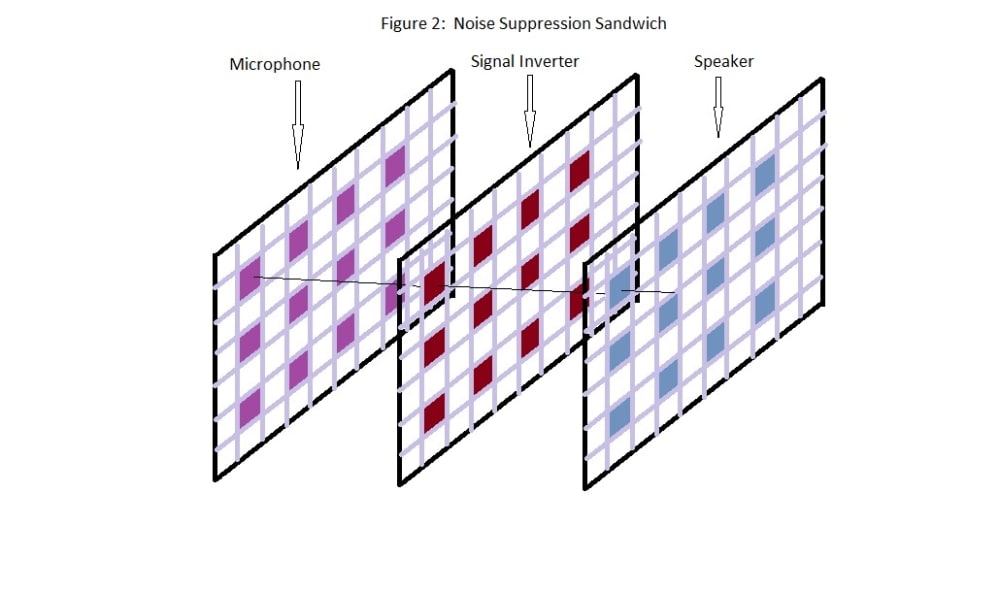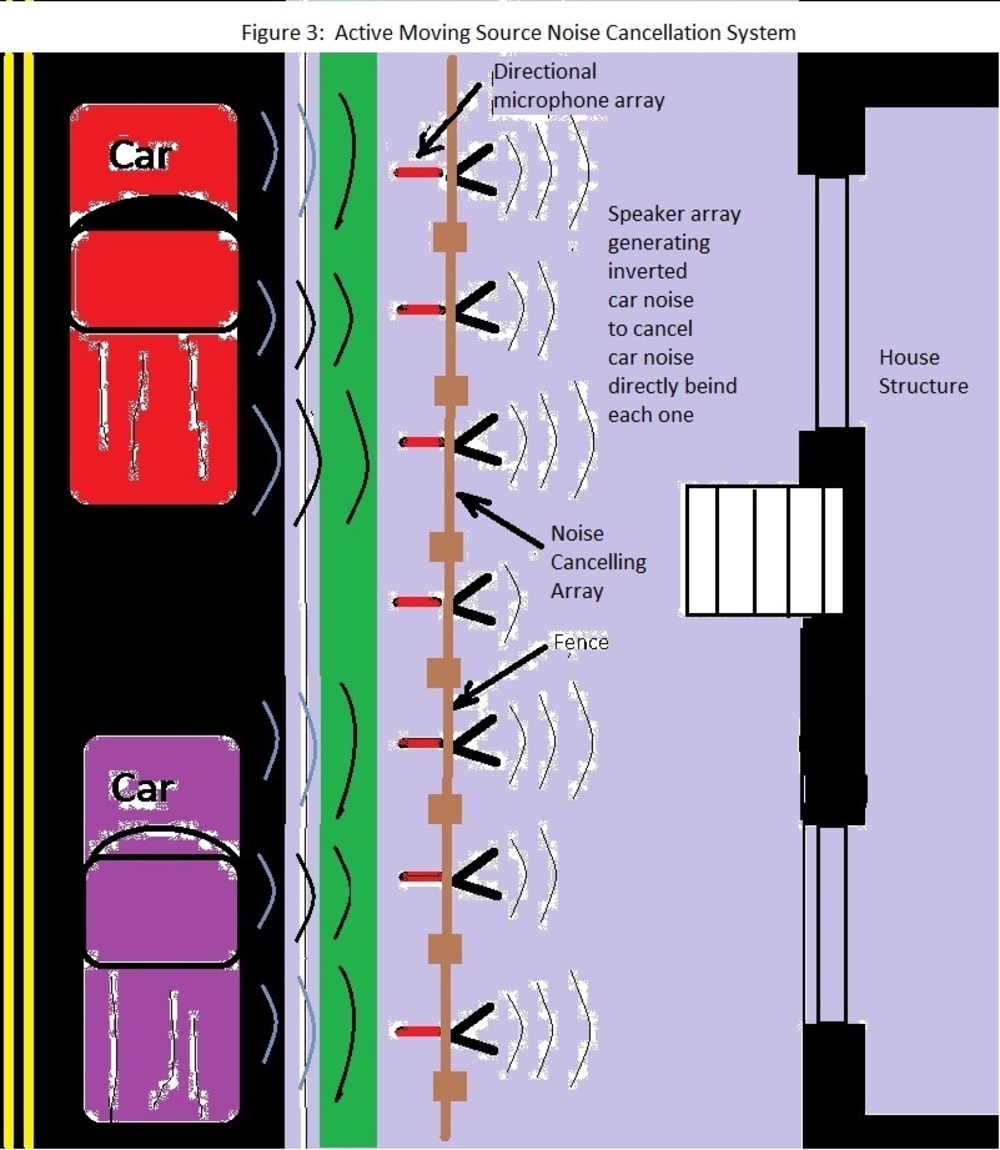Many people dream of home ownership. Often homes in wealthy exclusive neighborhoods are quiet and away from noisy traffic. However, with urban sprawl, more and more houses are inundated by traffic noise. One solution is to build a sound insulating wall. However, they often ruin the view or block sunlight because they must be high enough to block the sound.
This invention is made by making a fence with active noise suppression. The invention requires a power source and separate weatherproof microphones, speaker, noise cancelling circuit arrays and weatherproof terminal electronics enclosures. The first step is to build a fence along the property line that faces the noise sources which is usually traffic. Mount speaker array on a thin wire rope mesh net mounted in a tensioned frame (Figure 1). This may be made of, for example, tensioned stainless steel. The same is done for the microphone array and a noise cancelling module on a third mesh net in between the other two. These three tensioned mesh girds sandwich together to form a noise suppression panel (Figure 2.) Wiring mounts to the wire mesh and terminates at the frame which contains preamps and active noise processor power supplies. Mount these frames such that the speaker arrays face the housing structure (Figure 3.) Mount microphone array facing the noise source along the fence behind the speakers connecting each microphone/speaker with noise cancelling circuit in between. These grids are aligned to allow vibration isolated connection between each microphone, noise suppression circuit board and speaker. Use the weatherproof electronics enclosure to house an amplifier and noise cancelling power.
As fence microphones picks up the traffic noise, the processor inverts the signal and feeds this signal directly to the speaker behind microphone/processor. The speaker sound cancels the incoming sound by addition. For example, if the sound is a(sin(b(t))) were a and b are constants and t is time, then the speaker puts out -a(sin(b(t))) which when added suppresses the sound. This inverted signal is broadcast towards the housing structures by the speaker directly behind the microphone/processor. This system’s power could come from solar powered batteries. The solar cell could be inlaid between the post and batteries inside the post. This system “follows” the sound of the moving noise source, such as a car, so that the active noise suppression is always between the moving source and the structure. Microphones may also mount near various windows facing the noise source. The microphones near the windows send signals to the amplifier to adjust speaker volume and waveform to compensate for distortions due to reflection off the structure to minimize the noise heard inside the house.
With miniaturization and mass production, the system cost could be made relatively moderate.
Like this entry?
-
About the Entrant
- Name:Harry Archer
- Type of entry:individual
- Software used for this entry:N/A
- Patent status:none








